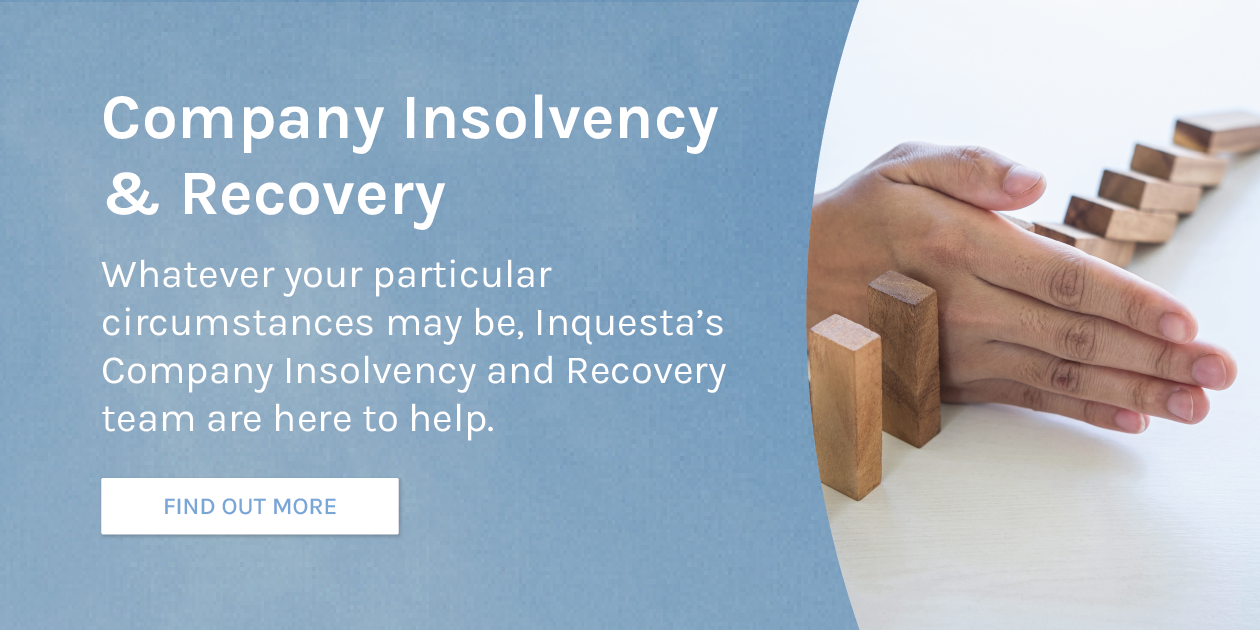Do You Still Obtain Redundancy If Company Goes Into Administration? Insights for Administration Staff and Their Pay
Do You Still Obtain Redundancy If Company Goes Into Administration? Insights for Administration Staff and Their Pay
Blog Article
Business Insolvency Company
7 Preswich Avenue, Leigh, WN7 1RZ
0333 567 1686
Comprehending the Effects of Business Liquidation on Worker Retention and Perks

Impact on Job Safety And Security
In case of firm liquidation, the effect on task safety can be considerable for staff members as uncertainty relating to future employment arises. When a business enters into liquidation, employees face the complicated possibility of prospective work loss. This unpredictability can bring about increased stress and anxiety and anxiousness among the workforce, impacting their spirits and productivity.
During the liquidation process, workers may experience a range of feelings, consisting of rage, fear, and frustration, as they come to grips with the opportunity of unemployment. The absence of quality surrounding the timeline of the liquidation and the fate of their positions can produce a feeling of instability within the labor force.
Moreover, workers may also be concerned about the status of their benefits, such as healthcare coverage, retirement strategies, and paid pause, during and after the liquidation procedure. The prospective loss of these advantages adds another layer of complexity to an already difficult circumstance for staff members.
Changes in Worker Advantages

One common adjustment is the decrease or elimination of specific benefits to reduce costs and resolve arrearages. For example, company payments to retirement plans may discontinue, leaving employees to take on the full duty of conserving for their future. Health care advantages might be scaled back, resulting in higher out-of-pocket expenditures for clinical services.
Interaction becomes critical during this duration of transition. Employers need to be transparent regarding the adjustments, supplying clear explanations and support to aid employees browse via the modifications. Open up dialogue and support can assist ease anxiety and uncertainty among the labor force, fostering a much more favorable transition experience in spite of the difficult conditions.
Retention Methods Post-Liquidation
Complying with the company liquidation, carrying out effective retention techniques is crucial to securing business talent and keeping security within the workforce. In times of unpredictability, staff members may feel anxious concerning their future job safety and be much more likely to look for different work possibilities. To alleviate this danger, firms need to focus on open communication, providing openness pertaining to the firm's scenario, and using support to employees throughout the transition duration.
One trick retention method post-liquidation is to prioritize employee health and spirits. This can be accomplished through regular check-ins, counseling solutions, and developing a positive workplace. Furthermore, supplying career growth opportunities and upskilling programs can improve worker inspiration and engagement throughout tough times. Acknowledging and compensating workers for their loyalty and commitment can also foster a sense of commitment and commitment to the company.
Additionally, developing a clear profession development path and setting sensible goals can provide employees an orientation and function within the firm (if a company goes into administration do i have to pay them). By purchasing staff member development and actively entailing them in decision-making procedures, organizations can enhance staff member retention prices and build a durable labor force post-liquidation
Legal Civil Liberty and Protections
During the aftermath of firm liquidation, it is important to deal with the legal civil liberties and securities offered to employees to guarantee a fair and certified procedure. It is vital for staff members to Visit Website understand these civil liberties and seek legal recommendations if needed to navigate the intricacies of the liquidation procedure.
Additionally, in situations where a business goes into liquidation, employees are frequently thought about special creditors, giving them greater top priority in receiving exceptional repayments over various other financial institutions. Recognizing these legal rights and protections is fundamental for workers to secure their rate of interests and look for proper choice in the occasion of business liquidation - do you still get redundancy if company goes into administration.
Managing Financial Unpredictability
Browsing financial uncertainty can be a challenging challenge for employees affected by company liquidation. Throughout such times, it is vital for workers to assess their present financial scenario realistically.
Looking for my latest blog post financial therapy or support from professionals can provide valuable understandings into taking care of debts, reorganizing economic obligations, and preparing for the future. It is necessary for staff members to remain notified concerning their entitlements, such as severance plans or outstanding settlements, to guarantee they get what they are owed. Taking into consideration different employment options or job possibilities can help bridge economic gaps throughout this transitional period. By proactively attending to economic challenges, workers can browse via the uncertainty triggered by firm liquidation with greater resilience and preparedness.
Final Thought
To conclude, firm liquidation can have significant ramifications on worker task protection, advantages, and total health. It is essential for organizations to execute retention methods and give assistance to workers throughout this unsure time. Recognizing lawful civil liberties and defenses can help mitigate the impact of liquidation on employees. Coping with monetary uncertainty needs a positive strategy and interaction from both companies and employees to navigate through the challenges efficiently.
When a company encounters liquidation, the fate of its staff members hangs in the balance, increasing critical inquiries concerning job protection, benefits, and lasting security. The effect of business liquidation on staff member retention and advantages is a complex issue that requires a closer visit this site assessment to understand the full range of its consequences.
Browsing economic uncertainty can be a difficult obstacle for employees influenced by company liquidation. By proactively attending to economic difficulties, staff members can navigate through the unpredictability caused by business liquidation with greater strength and readiness.

Report this page